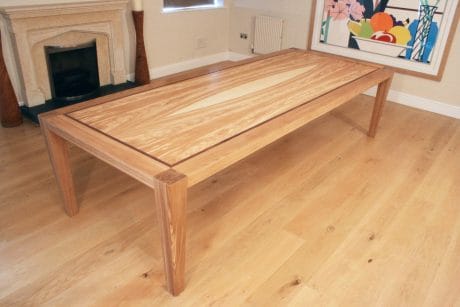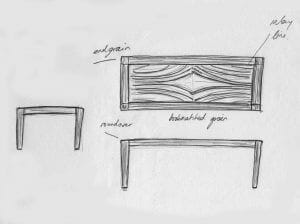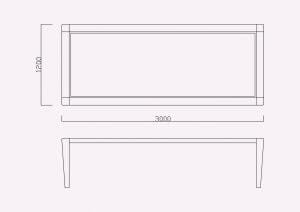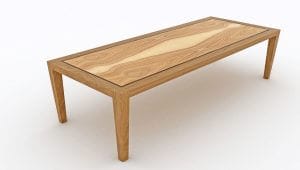Blog

Bespoke Furniture – Exclusive Luxury (Part 4)
A bespoke design
In the first three parts of this series I have looked at the factors which play a part in determining the price when you want to customise furniture to your tastes. The choice of materials, the finish, the size of the piece and its location will all cause the quote to fluctuate, however the factor which could have the greatest impact on price is the overall design itself.
It’s all in the brief
Asking a designer to come up with ideas for a simple minimalist, rectilinear table could be solved with a big slab of wood and four block legs. A few simple sketches and a discussion about proportions could settle the brief quickly. If the brief is for an organic table which is a nod to the clients obsession with sharks, then clearly this will involve a lot more head scratching during the design phase. Most artists and designers will charge you a fee for coming up with these solutions and the fee will often depend on how elaborate your brief is.
Visualising the concept
Ordinarily, you will need to see some representation of what the artist is proposing to create before giving the go ahead but the complexity of this may also affect the design fee. This can be done in many forms: rough sketches, 2D “flat” technical drawings, perspective drawings / watercolours , computer 3D render, 3D computer walk through / tour in video form or finally a scale or full size model. If the concept is relatively straightforward then a simpler representation may well be sufficient. However you may not be able to translate technical drawings in your own mind as easily as a designer can so this also need to be considered. When it comes to seating, it is not uncommon for a designer to make a prototype first to double check that their solution is comfortable for you. As I mentioned in the third part of this series, it is worth remembering that the designer / maker’s time is usually much more expensive than the materials.

Initial sketches of bespoke dining table

2D technical line drawing

Computer render of dining table
Producing the design – Straight v Curved
The complexity of the design often translates into complexity of making and it is useful to know that, generally speaking, straight edges and flat surfaces involve much less work than curved ones. This is because machines and tools are designed to deal with rectilinear work in the quickest time. As soon as a curve is introduced, however shallow it may be, it will change the maker’s approach. Not only may the tools used require a more freehand (and sometimes less predictable) approach but custom made templates and jigs will often have to be made to guide the tools or hold the piece whilst it is being worked on.

Flat surfaces and straight lines will minimise labour costs
Conclusion
The word customisation can sometimes be associated with the excess of having too much choice and a good designer or artist should tell you that by adding hundreds and thousands, raspberry sauce and a chocolate flake you will no longer appreciate the salted caramel.
Be guided by the experience of the designer, but also listen in to your gut instinct as you know yourself best. To hone in, ask yourself , how does their proposal make you feel? If their initial ideas don’t quite hit the mark, don’t be afraid to ask questions about tweaking their proposals. Creating a bespoke design together can be a very rewarding process and when it clicks, the results of this collaboration will be something that you and other generations will cherish for many years to come.